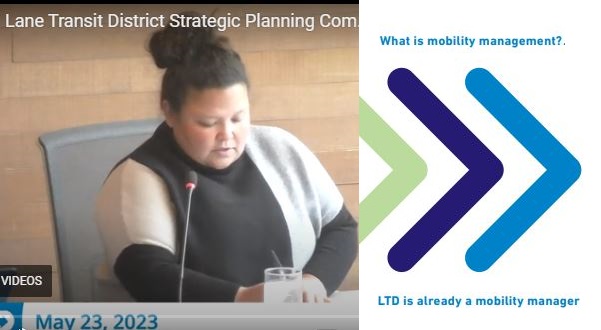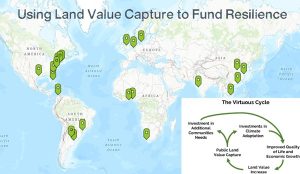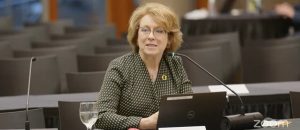LTD committee looks for more details on mobility management, outreach
9 min read
LTD’s Strategic Planning Committee—and the public—have questions about mobility management. At the May 23 meeting:
[00:00:08] Rob Zako (BEST): I’m Rob Zako, of course. I’m the Executive Director of Better Eugene Springfield Transportation.
[00:00:13] I’m very interested in the mobility management strategy. I (and BEST) see this as important towards what’s being called LTD 2.0, LTD becoming more of a mobility management agency…
[00:00:26] I could only briefly skim through the draft, and it looks like there’s a lot of interesting material in there. But to be quite blunt, I’m not quite sure what it’s telling us or you.
[00:00:37] There’s a lot of details. I would like to hear an executive summary of just a minute or so of what is this saying about the future of LTD.
[00:00:46] Just to be clear, BEST supports LTD’s move towards more mobility management. We’re interested to see where this goes and interested to hear your discussion .
[00:00:56] Andrew Martin (LTD): I want to start off really talking about how mobility management is an approach to designing and delivering services that starts with the customer. And really, it’s a vision in which the transportation network, public transit, private operators, basically the whole system works together to deliver the transportation options that best meet our customers’ needs.
[00:01:15] Mobility management isn’t new to LTD. We’ve been doing this through our RideSource call center, which has I think 18 or 19 different programs. It’s one call to the customer. We were part of getting bike share in Eugene. We’ve been piloting Mobility on Demand.
[00:01:29] We’ve been doing mobility management. The point of this strategy is to make sure that we’re doing that deliberately so we can do it more efficiently, we can evolve more quickly, and really take this on as an approach that’s embedded in all of our work, not these kind of one-off pilots that we do from time to time.
[00:01:46] We’re going to be hopefully using this approach if our board adopts it as a strategy to get this into our comprehensive operations analysis. And so when we look at our fixed route services, how they’re performing, we can look at your neighborhood and say, ‘Well, here’s how fixed routes are performing. Here’s how something else could work with that.’
[00:02:01] It goes into the strategic business plan. It’s going to go into our funding, our budget, our capital improvements plans. And it has to make its way through there so that we can get it in those processes where we’re looking at the whole community and saying, ‘There’s a clear need there. Let’s figure out how to fix that need.’
[00:02:18] Vidal Francis (Strategic Planning Committee): The question I have is, with this new approach, in terms of looking at your progress, how are you going to be able to monitor your improvement, if I can say this right, over time with this new approach?
[00:02:30] Alma Hesus (Strategic Planning Committee chair): Tom, you had a response to that.
[00:02:34] Tom Schwetz (LTD): Good, good question. Just to build on what Andrew was saying, I think part of how we’re seeing this is that this is a step in a, I’ll say, a network of planning efforts that we’re going though. You may be familiar with the fact that the comprehensive operations analysis is a cyclical— every three years, we’re looking at that.
[00:02:53] What Andrew went through today is how we’re expanding our view about how we can provide access and accessibility to people that right now don’t have good access, I’ll say, to public transit. And some of the measurement is going to be, are we feeding people to our buses, and our ridership going up as a result. Some of that’s going to happen.
[00:03:17] I think some of it too is, this range of transportation options, it’s going to be able to provide accessibility directly to people. So we’ll measure the pilots. How successful are the pilots in these things?
[00:03:29] The connector down in Cottage Grove, people are gaining a lot of accessibility just with that kind of service. So we’re learning what works, we’re putting this plan and strategy together to help us explore further and develop…
[00:03:47] Marianne Nolte (Strategic Planning Committee): Will LTD be reacting to things that are going on in the community, like bike share, or will LTD be driving the conversation to try and figure out, well, where are the gaps? Or will it be more reactive, like, ‘Somebody has said there’s a gap, we weren’t aware of it beforehand.’ I guess I’m just trying to figure out (pardon the pun, but) who’s driving that?
[00:04:13] It would be nice to, I think Rob Zako mentioned this earlier, but just maybe to have an executive summary about what the strategy is and what the purpose is. And then I would also like to see more clarity around how we’re gathering feedback from the public…
[00:04:31] I would really like to know how this gets rolled out to gather public feedback so that we’re really hearing from the people we need to hear.
[00:04:39] Mike Eyster (Strategic Planning Committee): My prior long-time experience with LTD has been focused on: Where’s our next EmX route going to go? And this is new, this is 2.0, that isn’t the question. The question is the question that Jameson asked: What does our community need from us? And it’s a whole new way of thinking. And so I’m starting to get my head wrapped around it, but I’m still pulled to ask: Where’s the substance?
[00:05:05] You know: What specific substance am I being asked to address? I’m willing to put that on hold because what you’re trying to help us understand is that this is a new approach and your goal is to interweave that approach into the way LTD thinks and operates.
[00:05:24] At some point I’m going to want to know where the substance is. So that’s my comment and observation.
[00:05:31] Andrew Martin (LTD): This is going to show up in our plans and policies. Tom also has some ideas partnering with academic institutions, as we do our other plans and policies, as we engage in that research with our partners at universities and with private sector entities and with other public sector agencies to roll this stuff out, you will see changes in your service and we’re hoping that they’re good.
[00:05:51] And if they’re not, most of them will probably be a pilot project. We’ll try something else, right? We want to meet people’s needs, and so we’re going to be iterating and trying things and we’ll have, I think, a lot of good conversations about very specific proposals in the future, Mike.
[00:06:04] The first step is for us to lay this foundation and then embed it in the rest of our work, so it’s not just one pilot… We’re really trying to transform our approach to delivering service to the community.
[00:06:17] Councilor Greg Evans: I’m interested in being able to connect neighborhoods that are underserved by the current system and creating more capacity through a mobility management system that utilizes different modes that flows into and is managed by LTD…
[00:06:40] I have a brand-new subdivision that’s coming up, which is west of North Terry on the south side of Barger. And there are going to be a number of homes that are going to be built in that area. In fact, there are a number of homes that have been built over the last 20 years in that area. And yet we have pulled service back because of ridership numbers and people not taking the bus.
[00:07:07] The big question is: Who are those private partners going to be? What is the vehicle that LTD will be able to connect with, say, a private provider, whether that’s Uber, Lyft, or another provider that will provide some kind of microtransit service that connects into the broader service profile for LTD and makes it easier for people to travel to their destinations instead of having to deal with the hub-and-spoke system that we currently have (which I think has been outdated for years)?
[00:07:47] When I look at people that live in Northwest Eugene, the next ward over in Ward 7, Trainsong is an isolated community, an extremely underserved community, and highly underrepresented in a variety of these venues across Eugene. So because you have the combination of disenfranchisement, poverty, lack of access to certain transportation modes and other things, I’ve got people who call cabs or call Ubers to go to WinCo.
[00:08:29] WinCo is not that far, technically, from that neighborhood to go up onto Barger and Echo Hollow. However, a cab ride or an Uber ride, it’s almost cost-prohibitive, but those people have to build that cost into the cost of their groceries and everything else.
[00:08:56] What we have to do and what we should be doing and what we’ve been trying to do for years, is try to figure out how we can provide the most cost-efficient service to the people who have the highest amount of need in terms of transportation to get to basic services like food and medicine, etc. And so that to me makes mobility management an exciting prospect.
[00:09:31] But as we are looking out and talking about adding ‘choice’ ridership, don’t forget about the people who depend on our fixed-route system and who also don’t have the ability to access our fixed-route system because of the geography of where they live.
[00:09:54] Alma Hesus (Strategic Planning Committee chair): What I appreciate seeing here is, we talk about increasing access for traditionally underserved populations and folks, and again, very similar to what Councilor Evans was sharing, thinking about the weight of those voices at the table talking about access, because all the folks listed on this—college students, shift workers, rural residents, households without vehicles—they share one thing in common. It’s access to power and access to resources.
[00:10:17] So I appreciate that, if we are looking at this lens or this decision-making tool centering the voices of folks furthest from opportunity or have been historically marginalized from opportunity and access to resources, that feels good to me. And if we’re using that to, like, think about all the decisions LTD is making, that’s important.
[00:10:33] And also for me thinking about framing this conversation, this space: Who is not at this table right now that can represent those communities and those voices, so that we can bring that to the table and give that feedback?
[00:10:43] So that’s kind of what I’m hearing. And if that’s what this tool is intended for, that makes me very excited, which I feel like it is. And I also feel like we’re thinking in a space of abundance, not scarcity. You know, how are we lifting everyone else up? So I will hand it over to Tom now.
[00:11:00] Tom Schwetz (LTD): I’m not sure how much I can add after that, I have to say. That was very well put…Alma, how how you put it was, was exactly was resonating with me as you were talking. It was great. Thank you.
[00:11:12] Alma Hesus (Strategic Planning Committee chair): Thank you. And to me it’s aspirational. So how do we do that? So I think that’s the thing, right? Like, so it is this tool, and to me it’s like, I know we have some folks online and we have folks on our little agenda here, but, like, how do we make sure we bring those voices to this table so they can have more direct input and give more feedback?
[00:11:28] And so I look forward to these opportunities to talk to the community more and meet folks where they’re at. ‘Cause maybe we need to have one of these meetings out in the community where folks are.
[00:11:36] John Q: With LTD directed to learn ‘what our communities need us to be,’ the Strategic Planning Committee asks for more details about future outreach.



